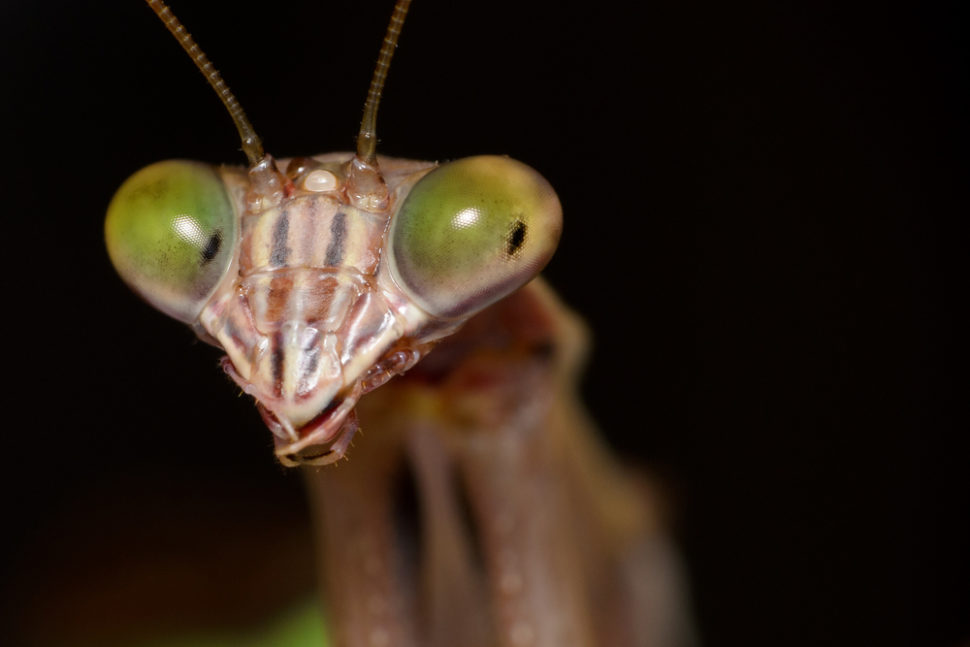Despite the tiny size of their brain, insects have developed quite amazing abilities, like their vision, which is one of the most complex capabilities that they’ve evolved.
Take praying mantises, for example. These insects are known for their 3D vision or stereopsis.
Stereopsis, demonstrated by many insect and animal species, including humans, is the 3D perception of objects by calculating distance using the disparity between two sources (the retinas).
But that’s pretty much all scientists know about mantises and other insects’ depth perception.
To better understand the neural workings of mantis vision, a group of neuroscientists at Newcastle University (UK) have devised an intriguing experiment with praying mantises.
Insects’ 3D Neurons and Robot Vision
Dr. Ronny Rosner, a research associate in the Institute of Neuroscience at Newcastle University, and his team discovered four classes of neuron involved in mantises’ 3D vision.
They even could take stunning images of the 3D neurons under a powerful microscope.
To come to these findings, the team set up what you can call “insect cinema” with 3D glasses, 3D sequences and all.
They fitted praying mantises with specially-designed 3D glasses and showed them 3D movie of simulated bugs. As the insects were enjoying the sequences and dreaming of a filling meal, their brain activity was closely monitored.
When the image of the prey bug came within striking distance, individual neurons fired and researchers were there to record the activity.
As to the significance of such an experiment, Dr. Rosner thinks it helps them “answer how insects achieve surprisingly complex behavior with such tiny brains and understanding this can help us develop simpler algorithms to develop better robot and machine vision.”
The findings suggest that neuroscientists still have a lot to uncover about mantis 3D vision, especially how exactly these specialized 3D neurons calculate distance.
Professor Jenny Read, professor of Vision Science at Newcastle University, who oversaw the research, thinks of it in another way. She said:
“In some ways, the properties in the mantises are similar to what we see in the visual cortex of primates. When we see two very different species have independently evolved similar solutions like this, we know this must be a really good way of solving 3D vision.”
This research also opens up a new path to explore machine vision. The team hopes they can develop simpler algorithms for robot vision based on the tiny and straightforward brains of insects and their 3D neurons.



















Comments (0)
Most Recent